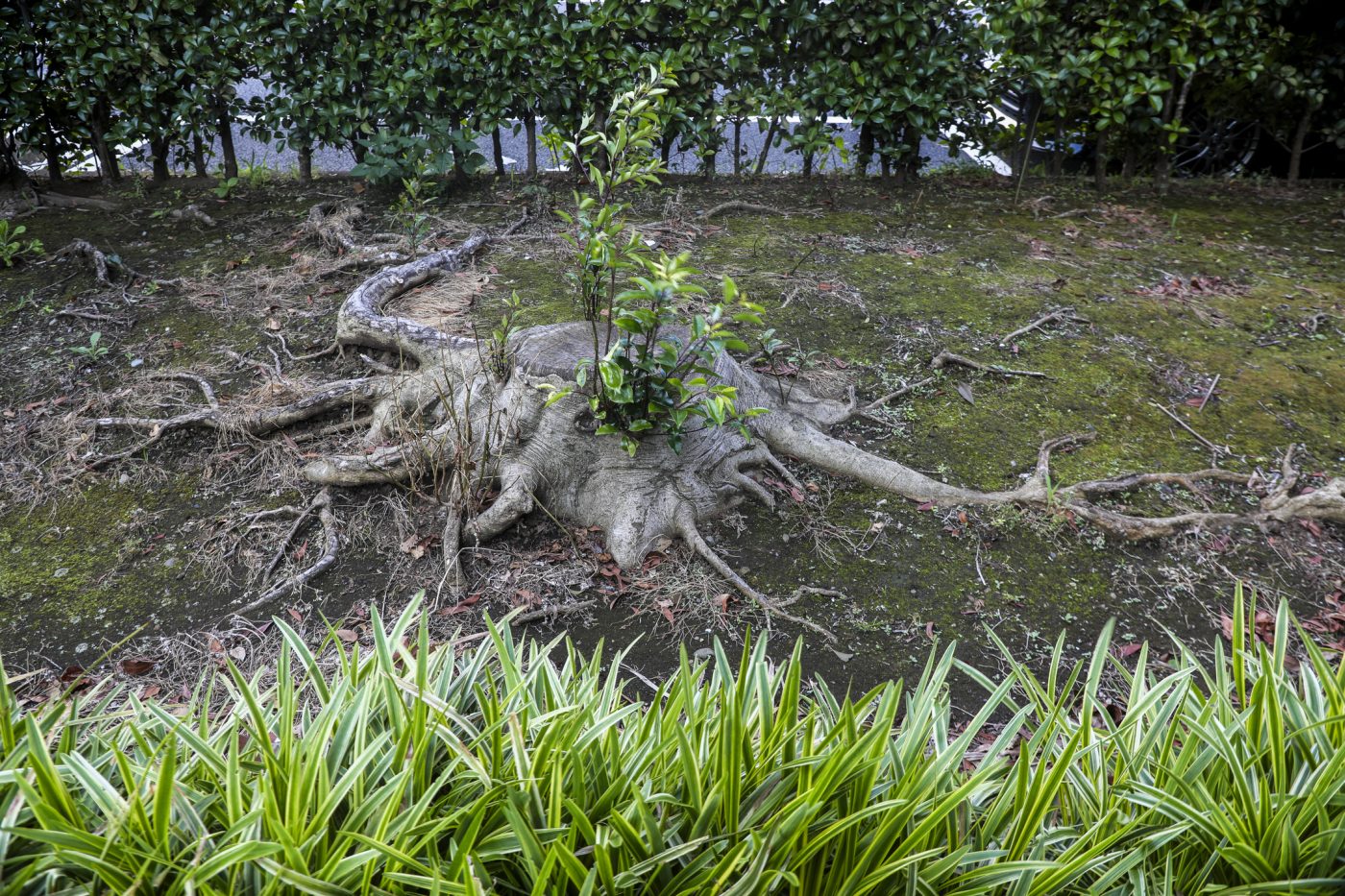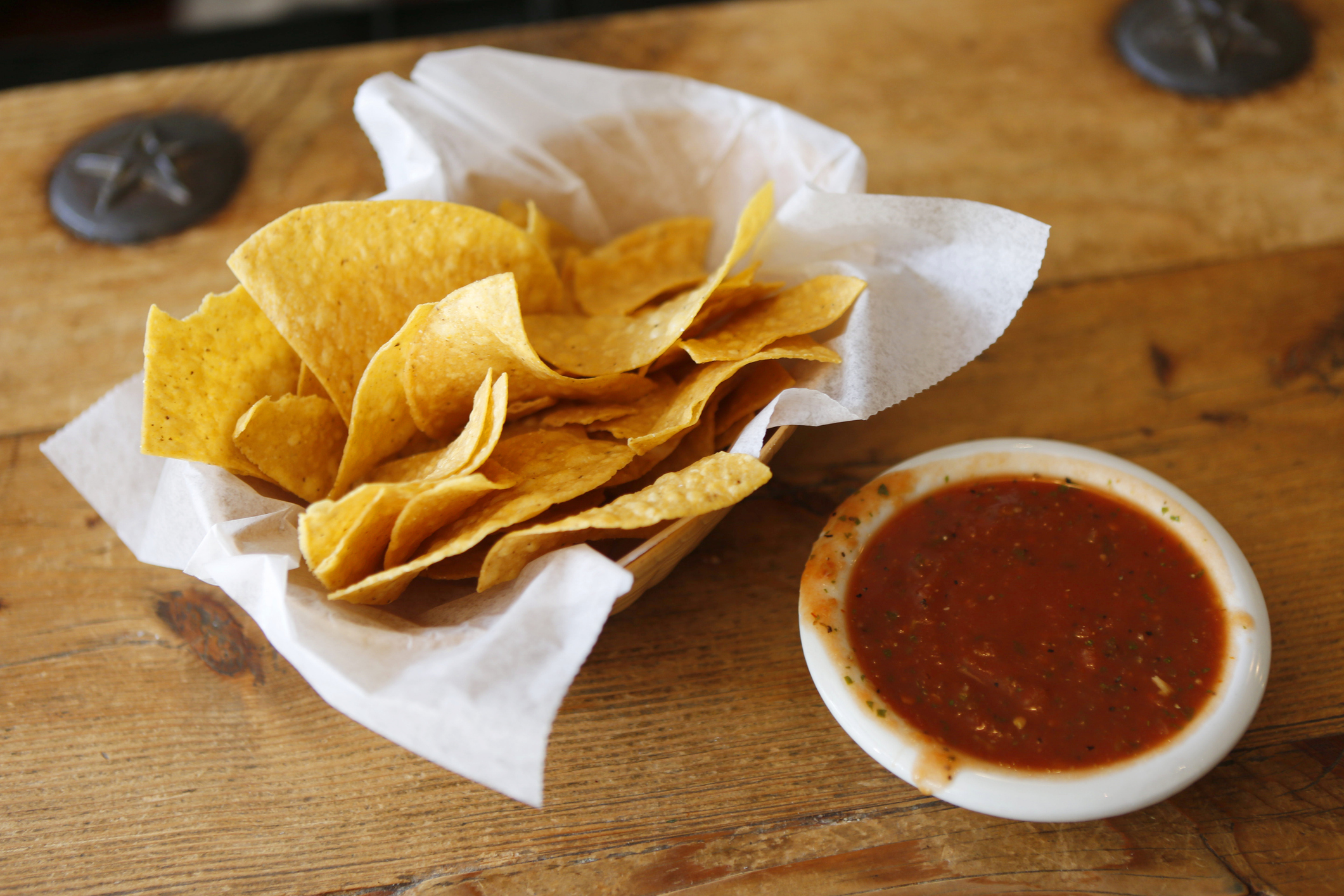Thought of the Day

Good news goes on crutches, bad news travels fast.


Good news goes on crutches, bad news travels fast.


Bok Choy Stir Fry Recipe from Skinny Taste
Prep time: 7 minutes
Cooking time: 8 minutes
Serving size: 4 servings



By WILL WEISSERT, ZEKE MILLER and JUSTIN SPIKE Associated Press
WASHINGTON (AP) — President Donald Trump berated Ukrainian President Volodymyr Zelenskyy for being “disrespectful” Friday in an extraordinary Oval Office meeting, then abruptly called off the signing of a minerals deal with the U.S. that Trump said would have moved Ukraine closer to ending its war with Russia.
The astonishing turn of events could scramble international affairs in Europe and around the globe. During his visit with Trump, Zelenskyy had planned to sign the deal allowing the U.S. greater access to Ukraine’s rare earth minerals, then hold a joint news conference.
Instead, Ukraine’s leader left the White House shortly after Trump shouted at him, showing open disdain. Untouched salad plates and other lunch items were being packed up outside the Cabinet room, where the lunch between Trump and Zelenskyy and their delegations was supposed to have taken place.
The White House said the Ukraine delegation was told to leave.
“You’re gambling with World War III, and what you’re doing is very disrespectful to the country, this country that’s backed you far more than a lot of people say they should have,” Trump told Zelenskky.
The last 10 minutes of the nearly 45-minute meeting devolved into a tense back and forth between Trump, Vice President JD Vance and Zelenskyy, who had urged skepticism about Russia’s commitment to diplomacy, citing Moscow’s years of broken commitments on the global stage.
Zelenskyy’s main objective going into the sit-down had been to press Trump not to abandon his country and to warn against moving too closely to Russian President Vladimir Putin. Instead he got shouted at while Trump appeared to play up the drama for the cameras.
At one point, Zelenskyy said Putin had broken “his own signature” 25 times on ceasefires and other agreements and could not be trusted. Trump responded that Putin had not broken agreements with him and mostly ducked questions about offering security guarantees to Ukraine, saying he thought the minerals deal — which is now on-hold — would effectively end the fighting.
Things first got testy after Vance challenged Zelenskyy, telling him, “Mr. President, with respect, I think it’s disrespectful for you to come to the Oval Office to try to litigate this in front of the American media.” Zelensky tried to object, prompting Trump to raise his voice and say, “You’re gambling with the lives of millions of people.”
A short time later, Trump posted on his social media site that he had “determined” that Zelenskyy “is not ready for Peace.”
“He disrespected the United States of America in its cherished Oval Office. He can come back when he is ready for Peace,” Trump wrote.
Trump also suggested that the heated exchange was productive: “Much was learned that could never be understood without conversation under such fire and pressure. It’s amazing what comes out through emotion.”
Democrats immediately criticized the administration for the breakdown. Democratic Senate leader Chuck Schumer said Trump and Vance “are doing Putin’s dirty work.”
The testy exchange was especially surprising since it came a day after Trump struck a more conciliatory tone toward Ukraine, calling America’s support for the country against Russia’s invasion “a very worthy thing to do” and disclaiming any memory that he had called the Ukrainian leader a “dictator.”
Trump and Zelenskyy spoke politely, even with admiration, of one of another for the first half hour of the meeting. But, when the Ukrainian leader raised alarm about trusting any promises from Putin to end the fighting, Vance offered his strong rebuke for airing disagreements with Trump in public.
That instantly shifted the tenor of the conversation as Zelenskyy grew defensive and Trump and his vice president blasted him as ungrateful and issued stark warnings about future American support.
“It’s going to be a very hard thing to do business like this,” Trump said to Zelenskyy as the two leaders talked over each other about past international support for Ukraine.
Vance then interjected, “Again, just say thank you,” blasting Zelenskyy for litigating “disagreements” in front of the press.
Trump seemed pleased that the scene was being recorded on camera. “I think it’s good for the American people to see what’s going on,” he added.
Trump also suggested that Zelenskyy should not be demanding concessions.
“You’re not in a good position. You don’t have the cards right now,” Trump said pointing his finger toward Zelenskyy. “With us you start having cards.”
Shortly before the meeting ended, Trump offered, “This is going to be great television.”
Before the blowup, Zelenskyy had been expected to sign a landmark economic agreement with the U.S. aimed at financing the reconstruction of war-damaged Ukraine, a deal that would have closely tied the two countries together for years to come.
As Ukrainian forces hold out against slow but steady advances by Russia’s larger and better-equipped army, leaders in Kyiv were pushing to ensure a potential U.S.-brokered peace plan would include guarantees for the country’s future security.
Many Ukrainians fear that a hastily negotiated peace — especially one that makes too many concessions to Russian demands — would allow Moscow to rearm and consolidate its forces for a future invasion after current hostilities cease.
Trump, a Republican, had framed the emerging agreement as a chance for Kyiv to compensate the U.S. for wartime aid sent under his predecessor, Democratic President Joe Biden. But Zelenskyy has remained firm that specific assurances for Ukraine’s security must accompany any agreement giving U.S. access to Ukraine’s resources.
It was Zelenskyy’s fifth White House visit, but his previous four came during the Biden administration. The Ukrainian president also was meeting with U.S. senators during his time in Washington.
Fears that Trump could broker a peace deal with Russia that is unfavorable to Ukraine have been amplified by recent precedent-busting actions by his administration.
Trump held a lengthy phone call with Putin, and U.S. officials met with their Russian counterparts in Saudi Arabia without inviting European or Ukrainian leaders — both dramatic breaks with previous U.S. policy to isolate Putin over his invasion.
Trump later seemed to falsely blame Ukraine for starting the war and called Zelenskyy a “dictator” for not holding elections after the end of his regular term last year, though Ukrainian law prohibits elections while martial law is in place.
___
Spike reported from Kyiv, Ukraine. Associated Press Writer Aaamer Madhani in Washington contributed to this report.

By MAKIYA SEMINERA Associated Press
SWANNANOA, N.C. (AP) — The tops of dried, bent cornstalks crunch underfoot. Jill Holtz’s gaze is fixed on the ground ahead.
She wanders into the nearby woods and weaves between twisted branches. Then, Holtz spots something and starts to riffle through the withered twigs. To the untrained eye, it’s easy to overlook. But for Holtz, it’s instantaneous recognition.
Scraggly, white lines give the appearance of shattered glass, but a name can still be made out at the top. It is a sonogram strip — crinkled, abused by the elements, but intact.
In early February, Holtz combed through parts of a flattened cornfield in Swannanoa, North Carolina — a rural area razed by fierce floodwaters from Hurricane Helene a few months earlier. The deluge swept away entire homes, and with it, people’s beloved photos, keepsakes and family heirlooms. Many have accepted that they are gone forever.
But lost items remain scattered across the region — tangled in gnarled trees, washed up in deep ravines and buried under mud. That’s why Holtz is on a mission: find and reunite those cherished possessions with storm victims who don’t have the time or energy to look themselves.
“It’s not just trash, and it’s not just trees and pieces of metal,” Holtz says. “It’s their lives. This is their hearts, their homes, the generations of history.”
Over the past few months, Holtz has spent much of her free time making the nearly four-hour drive from Raleigh to Swannanoa to search for lost items. She balances her job as a North Carolina National Guard captain and being a mom to two sons — a 10-year-old and a 24-year-old. It’s difficult being away, Holtz says, but her kids support her efforts.
Holtz first visited western North Carolina after the storm on duty delivering aid. Then, while helping retrieve lost objects in Swannanoa for Violet Vardiman — a woman Holtz fondly calls “Miss Violet” — Holtz realized how many other missing belongings were out there. So she kept coming back. Holtz posts her finds to Facebook in hopes of finding their owners.
At first, searching for lost belongings was overwhelming because of the sheer volume of objects strewn about, Holtz says. Now, she looks a few feet ahead of her at a time to stay focused.
She’s learned other tips and tricks too. Use larger pieces of debris to store missing keepsakes while walking. Put on a hat or your hair will get caught in tree branches. Wear gloves and sturdy boots. And if you see a Dallas Cowboys mat, stomp on it first before picking it up — Holtz, after all, is a Buffalo Bills fan.
After exploring the cornfield and adjacent woods for about 20 minutes, Holtz already has a handful to bring back — an 8-track tape, a teddy bear with golden wings and plenty of photos. Despite some scratches and their sun-bleached tone, the photos are in decent shape for what they’ve been through.
As Holtz walks back to her truck, she squints and scours the cornstalks for anything she missed. Holtz views each valuable she finds as an opportunity for joy, and if it’s left behind, there’s no guarantee it will be there next time.
What Holtz found in the cornfield will join the collection of other lost possessions in her trailer as she tries to find their owners. The spread inside resembles a garage sale.
Photos make up a large chunk of Holtz’s collection. Pictures captured from weddings, school and simple slices of life. Just from collecting photos, Holtz says she feels like she knows some people’s entire life story without ever meeting them.
To restore photos, she’s developed her own cleaning routine: Use cool water and rubbing alcohol, then carefully scrub with a soft toothbrush. It’s time-consuming, yet therapeutic.
Holtz sets down a large mud-spattered canvas — a piece that will require the toothbrush treatment — and slowly pours water over it. The gentle stream crackles against the crisp canvas. Faces emerge from the splotchy, brown haze. It’s a family portrait, Holtz says.
“I hope I find the owner of that,” she says softly.
Since Holtz started posting pictures of the lost possessions on Facebook, she’s consistently in contact with about 15 families. She has returned belongings to some and is waiting to connect in-person with others. Some of the families have evacuated the state and haven’t returned — but Holtz doesn’t mind holding onto their things.
“I’m in no hurry, and I don’t expect them to be in a hurry,” she says. “They’re still getting their lives back together.”
The next day, Holtz sets up her trailer by the cornfield. She had posted her location to social media and patiently waits to see if anyone comes. About a half hour later, a silver SUV pulls over. A woman from Swannanoa, Angie McGee, steps out.
McGee is looking for lost photos. The 42-year-old searched for her family’s belongings after Helene washed away her home, but she wasn’t successful. Wearing black latex gloves, she rubs caked dirt from the photos and notices familiar faces: her brother, her father and her son.
She even spots her ultrasound photos — the same scroll that Jill had picked up the day before.
She is stunned. McGee can’t believe the photos traveled nearly 2 miles downriver from her home — much less that Holtz had somehow found them. After months of anguish over what she had lost, McGee says she is finally “getting history back.”
“She done brought back a smile to me, she done brought back life to me. Not just me, my family,” McGee says. “Because, you know, there were things we lost that we thought maybe we never get back.”
At one point, McGee’s gaze settles on football shoulder pads with silver marker writing. The sight brings her to tears. They belong to her 12-year-old son, Link.
Holtz tries to not to cry. Later, the two women embrace before McGee leaves with her things. Giving people back their lost hope is why Holtz says she continues this work. But in these reunifying moments, it gives Holtz a little of her own hope, too.
___
AP National Writer Allen G. Breed contributed to this report.

WAYNESVILLE, N.C. (AP) — A stretch of Interstate 40 through the western North Carolina mountains is reopening to traffic this weekend, months after Hurricane Helene’s historic flooding collapsed portions of the road, partially restoring the major travel connection with eastern Tennessee.
The state Department of Transportation said the 20-mile (32-kilometer) section on the North Carolina side of the border will officially reopen on Saturday. Flooding in the Pigeon River gorge in Haywood County washed away over 1 mile (1.6 kilometers) of I-40’s eastbound lanes in late September.
Although usually a four-lane road, large portions of the section will operate for now with just one narrowed lane in each direction, with a 35 mph (56 kph) speed limit, according to the state Transportation Department. A concrete curb separates traffic, and periodic breaks provide access to emergency vehicles.
Gov. Josh Stein announced Feb. 10 that I-40 traffic would reopen by March 1.
“This opening improves the flow of people, goods and services between our two states and between locations far beyond Haywood County,” regional DOT engineer Wanda Payne said in a news release this week. The release said that travelers on the stretch of I-40 should expect delays, especially on holiday weekends and on Friday, Saturday and Sunday afternoons, and suggested they still consider alternate interstate routes.
While I-40 across the Tennessee line reopened months ago to traffic almost to the North Carolina border, one-lane-only sections also will extend into Tennessee to complete the connection, North Carolina DOT said.
North Carolina government had hoped to restore traffic on I-40 in early January, but that got delayed when more asphalt from eastbound lanes fell in mid-December. Contractors worked to stabilize what’s left of the road by driving long steel rods into bedrock below the road, filling them with grout and spraying concrete on the cliff face to hold them in place.
North Carolina government has already entered a contract for the road’s permanent reconstruction. Transportation Secretary Joey Hopkins told state lawmakers this week it would be late 2026 before the section can resume fully to four lanes, provided that stone can be quarried from the adjoining Pisgah National Forest. Otherwise, he said, it could take two to three additional years longer, because trucks will have to ship stone in from Tennessee.


Courage is the root of change and change is what we chemically designed for.


Veggie Pizza Appetizers Recipe from Mom On Timeout
Prep time: 10 minutes
Cooking time: 6 minutes
Serving size: 32 servings



LOS ANGELES (AP) — Gene Hackman, the prolific Oscar-winning actor whose studied portraits ranged from reluctant heroes to conniving villains and made him one of the industry’s most respected and honored performers, has been found dead along with his wife at their home. He was 95.
His dozens of films included Oscar-winning roles in “The French Connection” and “Unforgiven,” a breakout performance in “Bonnie and Clyde,” a comic interlude in “Young Frankenstein,” a turn as the comic book villain Lex Luthor in “Superman” and the title character in Wes Anderson’s 2001 “The Royal Tenenbaums.”
He seemed capable of any kind of role — whether an uptight buffoon in “Birdcage,” a college coach finding redemption in the sentimental favorite “Hoosiers” or a secretive surveillance expert in Francis Ford Coppola’s Watergate-era release “The Conversation.”
“Gene Hackman a great actor, inspiring and magnificent in his work and complexity,” Coppola said on Instagram. “I mourn his loss, and celebrate his existence and contribution.”
A plain-looking man with a receding hairline, Hackman held special status within Hollywood — heir to Spencer Tracy as an everyman, actor’s actor and reluctant celebrity. He embodied the ethic of doing his job, doing it very well, and letting others worry about his image. The industry seemed to need him more than he needed the industry. Beyond the obligatory appearances at awards ceremonies, he was rarely seen on the social circuit and made no secret of his disdain for the business side of show business.
“Actors tend to be shy people,” he told Film Comment in 1988. “There is perhaps a component of hostility in that shyness, and to reach a point where you don’t deal with others in a hostile or angry way, you choose this medium for yourself.”
He was an early retiree — essentially done, by choice, with movies by his 70s — and a late bloomer. Hackman was in his mid-30s when cast for “Bonnie and Clyde” and past 40 when he won his first Oscar, as the rules-bending New York detective “Popeye” Doyle in the 1971 thriller about tracking down Manhattan drug smugglers, “The French Connection.”
Jackie Gleason, Steve McQueen and Peter Boyle were among the actors considered for the role. Hackman was a minor star at the time, seemingly without the flamboyant personality that the role demanded. The actor himself feared that he was miscast. A couple of weeks of nighttime patrols of Harlem in police cars helped reassure him.
One of the first scenes of “The French Connection” required Hackman to slap around a suspect. The actor realized he had failed to achieve the intensity that the scene required, and asked director William Friedkin for another chance. The scene was filmed at the end of the shooting, by which time Hackman had immersed himself in the loose-cannon character of Popeye Doyle. Friedkin would recall needing 37 takes to get the scene right.
“I had to arouse an anger in Gene that was lying dormant, I felt, within him — that he was sort of ashamed of and didn’t really want to revisit,” Friedkin told the Los Angeles Review of Books in 2012.
Hackman also resisted the role which brought him his second Oscar. When Clint Eastwood first offered him Little Bill Daggett, the corrupt town boss in “Unforgiven,” Hackman turned it down. But he realized that Eastwood was planning to make a different kind of western, a critique, not a celebration of violence. The film won him the Academy Award as best supporting actor of 1992.
“To his credit, and my joy, he talked me into it,” Hackman said of Eastwood during an interview with the American Film Institute.
Eugene Alden Hackman was born Jan. 30, 1931, in San Bernardino, California, and grew up in Danville, Illinois, where his father worked as a pressman for the Commercial-News. His parents fought repeatedly, and his father often used his fists on Gene to take out his rage. The boy found refuge in movie houses, identifying with Errol Flynn and James Cagney as his role models.
When Gene was 13, his father waved goodbye and drove off, never to return. The abandonment was a lasting injury to Gene. His mother had become an alcoholic and was constantly at odds with her mother, with whom the shattered family lived (Gene had a younger brother). At 16, he “suddenly got the itch to get out.” Lying about his age, he enlisted in the U.S. Marines.
“Dysfunctional families have sired a lot of pretty good actors,” he observed ironically during a 2001 interview with The New York Times.
In 1956, Hackman married Fay Maltese, a bank teller he had met at a YMCA dance in New York. They had a son, Christopher, and two daughters, Elizabeth and Leslie, but divorced in the mid-1980s. In 1991 he married Betsy Arakawa, a classical pianist of Japanese descent who was raised in Hawaii.
When not on film locations, Hackman enjoyed painting, stunt flying, stock car racing and deep sea diving. In his latter years, he wrote novels and lived on his ranch in Sante Fe, New Mexico, on a hilltop looking out on the Colorado Rockies, a view he preferred to his films that popped up on television.
“I’ll watch maybe five minutes of it,” he once told Time magazine, “and I’ll get this icky feeling, and I turn the channel.”
__
AP National Writer Hillel Italie in New York and Entertainment Writer Andrew Dalton in Los Angeles contributed to this report. Bob Thomas, a longtime Associated Press journalist who died in 2014, compiled biographical material for this obituary.


Don’t judge yourself on other people’s opinion.


Pressure Cooker Chili Recipe from The Food Network Courtesy of Alton Brown
Prep time: 15 minutes
Cooking time: 35 minutes
Serving size: 4 servings

